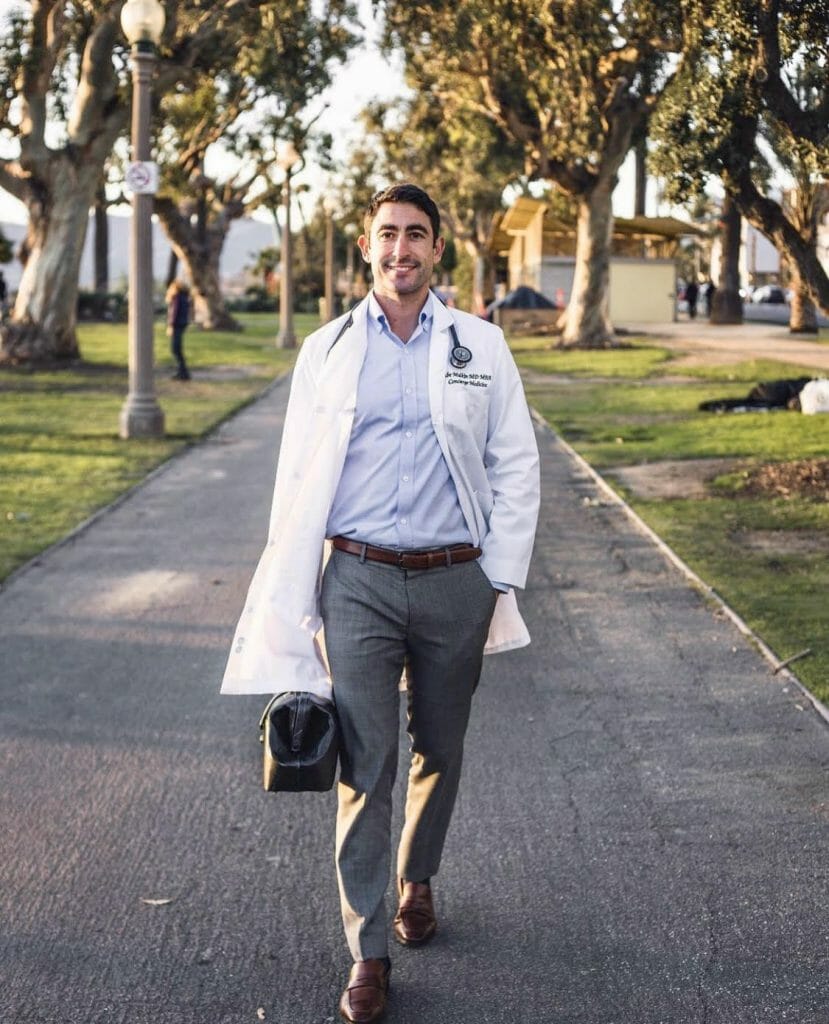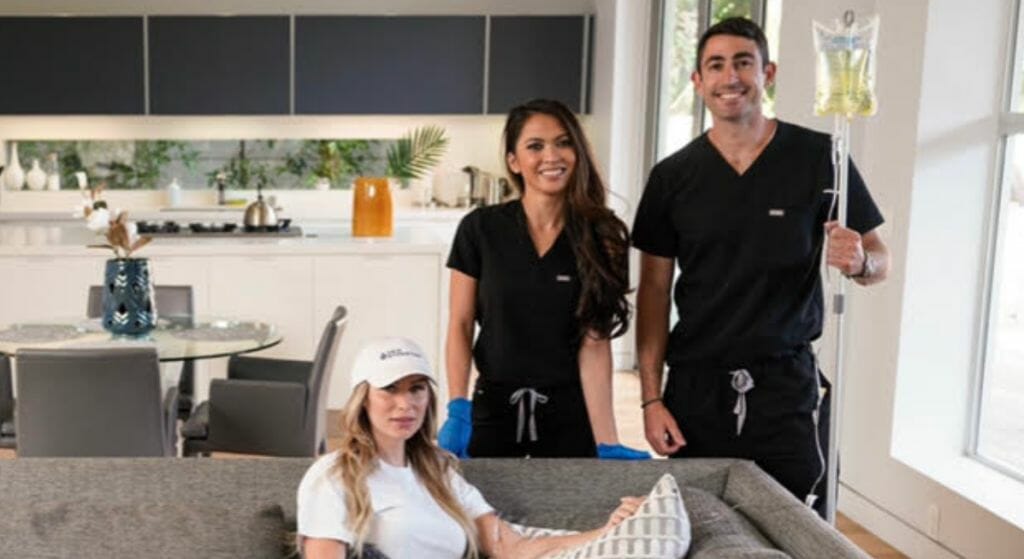Medical professionals can deliver at-home testing or immunity boosts without the hassle of long lines.
When L.A. Mayor Eric Garcetti first instituted curfews following the ongoing protests over police brutality and the death of George Floyd, he also closed all coronavirus testing sites in the city citing “safety worries.” As of June 3, only four testing sites in the city have reopened and several county-run centers also remain closed.
The coronavirus pandemic stops for no one, but there are a handful of doctors who will make house calls to facilitate a number of services including administering a test for COVID-19.
More than just a luxury for the rich — expect to pay around $249 for the convenience — some people choose this method to avoid highly-trafficked locations of sick people, like hospitals or other medical facilities.
“We do a variety of different tests,” says Concierge MD Medical Director Dr. Abe Malkin. “For people who are currently experiencing symptoms, we do a nasal swab test [to see] if you currently have the virus. If you’re not experiencing symptoms and you want to know if you’ve had the virus in the past, we do an antibody test.”
Antibody tests can go one of two ways. Staff can collect and process blood samples with a fingerstick — a device used to prick the skin and obtain drops of blood for testing — and patients can receive their results immediately. Or, they can draw blood and send the sample to a lab for processing. This method takes three to four days, but some choose it because, with a larger sample, the odds of finding antibodies are theoretically higher.
One drawback, though, is the lab may charge you or your insurance company about $100.

According to Malkin, people who want to reopen their businesses or return to work tend to be more interested in seeing if they have the virus because they don’t want to get anyone sick. And those who are curious to see if they have immunity to the virus choose the antibody test.
In the early days of testing, many complained about the invasive and uncomfortable deep nasal swab required to obtain an adequate sample, but these days Malkin uses the LabCorp anterior nasal swab, which isn’t required to go as deep into the schnoz.
Malkin’s group includes himself and up to four other medical professionals on any given day. He says that of the 1,000-plus tests they have conducted in people’s homes or offices, about 5% of the patients who showed no symptoms actually tested positive for the virus. He also says that most of those patients without symptoms who tested positive for the antibodies tended to be younger.
“Our patients definitely run the gamut of the social-economic spectrum. We see patients of all ages, all ethnicities,” he says, and he does offer discounts for those who cannot afford the fee. “Patients are using us because either they want the convenience of someone coming to their house or they want to not put themselves at risk by being around other people who might be sick.”
Before the pandemic struck our shores, Concierge MD offered a host of in-home medical services, including IV therapy which some have used to ease hangovers. Most of Malkin’s patients, though, use it for wellness. For example, people who travel a lot and are fatigued might need a boost of energy and decide to book the at-home IV treatment.

Due to the pandemic, Malkin says he’s seen a drop in patients wanting his services to help them recover from traveling or a night out partying. But he has seen a rise in clients who want to strengthen their immune system. For them, he offers an IV treatment that includes high doses of vitamin C, glutathione and zinc — for about $400.
“You feel really hydrated afterward,” he says, noting that “the vitamins we give you are higher doses than you’d be able to get normally taking them orally. So if you took vitamin C orally, your body can only really absorb 200 milligrams and then you start to excrete it in your urine. But when you take it via IV, you can take five to 10 grams, which is 50 times vitamin C and your body can absorb it because it goes directly into your bloodstream.
